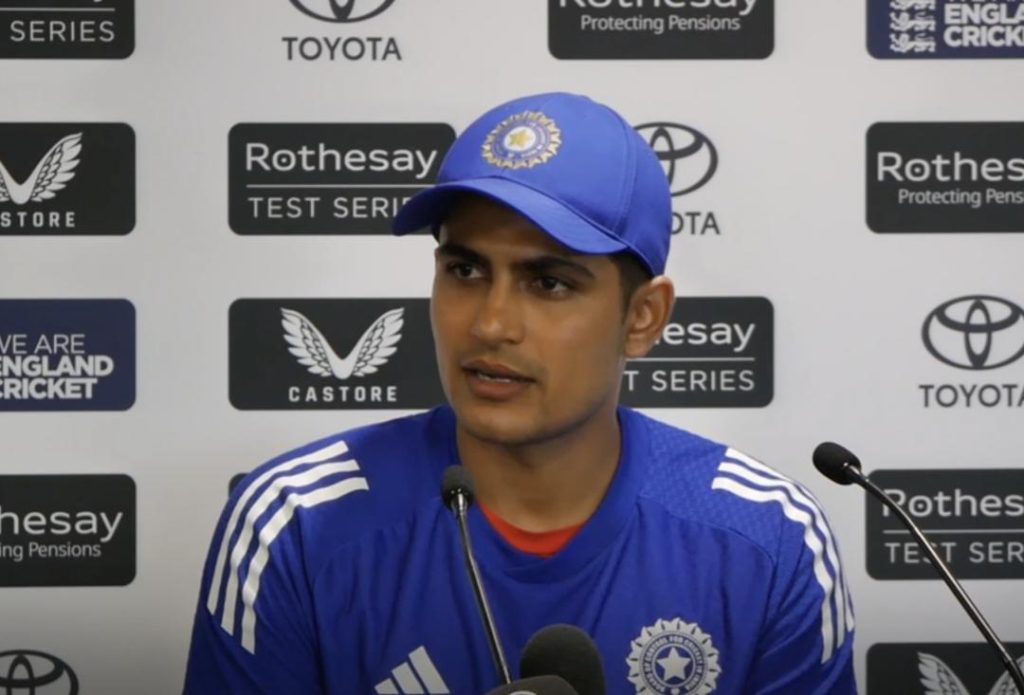
The Game Loses Its Essence: Gill on Flat Pitches & Dukes Ball
The ongoing Test series between England and India has been marked by a peculiar phenomenon – flat pitches and Dukes balls – which, according to India’s Test captain Shubman Gill, is making the game increasingly difficult for the bowlers. In a recent interview, Gill expressed his concerns about the lack of assistance for the bowlers, stating that the game is losing its essence due to the absence of challenging conditions.
The Indian captain’s comments come at a time when the series has seen some low-scoring games, with the bowlers struggling to make an impact on the game. The flat pitches, which have been a hallmark of English cricket, have made it challenging for the bowlers to extract any significant movement or bounce from the surface. The Dukes ball, which is designed to swing and seam, has also failed to provide the expected assistance, leaving the bowlers frustrated and struggling to contain the runs.
Gill’s concerns are not unfounded. In recent years, the trend of flat pitches and Dukes balls has become increasingly prevalent in international cricket. The desire to produce batting-friendly surfaces has led to a proliferation of flat pitches, which have made it difficult for the bowlers to take wickets. The Dukes ball, which was once a prized possession for bowlers, has also become less effective due to the lack of assistance from the pitches.
The consequences of this trend are far-reaching. Bowlers, who were once the stars of the show, are now struggling to make an impact on the game. The absence of challenging conditions has led to a proliferation of high-scoring games, which has made the game less exciting and less challenging. The batsmen, who were once forced to be defensive-minded, are now able to play aggressively and score runs at will.
But Gill’s concerns go beyond just the immediate consequences of the trend. He believes that the lack of challenging conditions is also having a long-term impact on the game. The bowlers, who are not getting the opportunity to practice their skills in challenging conditions, are not developing the necessary skills to take wickets in international cricket. The batsmen, who are not facing challenging conditions, are not learning how to play defensively and are not developing the necessary skills to deal with pressure.
Gill’s comments have sparked a debate about the future of Test cricket. Some have argued that the trend of flat pitches and Dukes balls is a natural consequence of the game evolving and that the bowlers need to adapt to the changing conditions. Others have argued that the trend is a result of the proliferation of flat pitches and that the game needs to go back to its roots and produce challenging conditions.
In reality, the issue is more complex than just the pitch or the ball. It is a combination of factors, including the way the game is being played, the way the teams are preparing, and the way the umpires are enforcing the rules. The bowlers, who are not getting the opportunity to practice their skills in challenging conditions, are not developing the necessary skills to take wickets in international cricket.
The batsmen, who are not facing challenging conditions, are not learning how to play defensively and are not developing the necessary skills to deal with pressure. The umpires, who are not enforcing the rules consistently, are allowing the game to become too one-sided.
Gill’s comments are a wake-up call for the game. It is time for the teams, the umpires, and the fans to come together and find a solution to this problem. The game of Test cricket is at a crossroads, and it is up to us to ensure that it continues to thrive and evolve.






